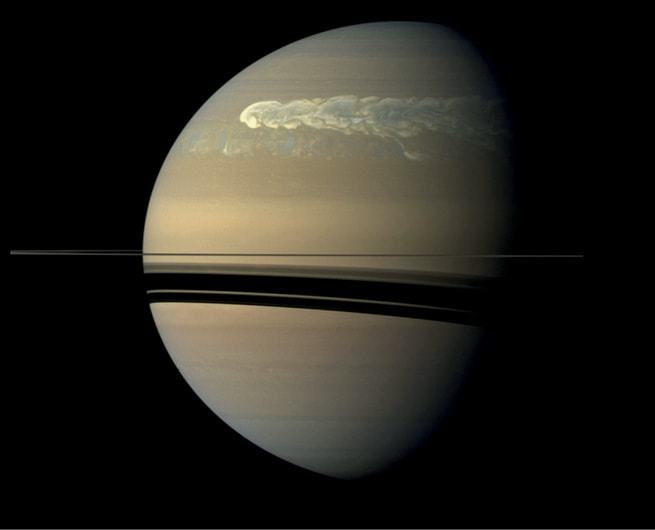According to a new study published today, astronomers have determined that Saturn, the second biggest planet in the Solar System, does not have a metallic core enveloped by liquid metallic hydrogen inside a layer of liquid hydrogen, but instead has a fuzzy or diffuse centre without clearly defined boundaries; a finding which could give greater insights into the planet’s primordial structure and accretion history.
Famed for its rings and huge hexagonal vortex at the planet’s North Pole, Saturn’s predominantly hydrogen atmosphere is also noteworthy.
Saturn's gaseous atmosphere is so immense, it crushed and vaporised NASA’s Cassini spacecraft when it ended its mission by diving into the giant planet in 2017.
It is also what stops scientists from peering down through the thick layers of clouds to see the planet’s surface, or to determine if it even has one.
Scientists are sure that it doesn't but it does have a dense core at its centre made up of metals like iron and nickel surrounded by rocky material and other compounds solidified by intense pressure and heat.
Why do scientists think this? Via gravity and seismic measurements taken by an orbiting spacecraft. Seismology and gravity field measurements offer researchers the best hope for directly inferring the interior structure of a planet.
Indeed, our understanding of the Earth’s interior is primarily down to seismic waves that bounce around the planet’s inside. When recorded with a seismograph they can provide information on what kinds of material the waves have been travelling through.
But, Saturn has something else up its sleeve that no other planet has in abundance like this gaseous giant; its rings.
Past studies have shown that Saturn’s rings act like a seismograph, by recording gravity waves and oscillations generated within the planet. Because the rings are coupled to the oscillations purely by gravity, ripples created by the perturbations can be measured like other forms of wave – this is known as ring seismology and was a technique first developed in the 1980s.
By incorporating gravity data with seismic measurements from Saturn’s rings, Christopher Mankovich and Jim Fuller at the California Institute of Technology, US, have been able to look beyond the planet’s outer regions to “see” what lies beneath.
The duo find that Saturn’s core extends to about 60 percent of the planet’s radius — substantially more than previous estimates.
It is also composed of a diffuse mixture of hydrogen and helium combined with heavy elements, and contains approximately 17 Earth masses of ice and rock, say Mankovich and Fuller.
This is contrary to previous studies of the core and the envelope which suggest they are clearly separated.
“Our finding of a diffuse core in Saturn stands in contrast with the more centrally condensed heavy-element distributions predicted by classic core-accretion models”, the authors write in their paper published in Nature Astronomy.
This gradual distribution of heavy metals in Saturn’s core - a scenario more inline with recent accretion models say the duo – constrains mixing processes at work and as such could help shed light on how the planet was made.











